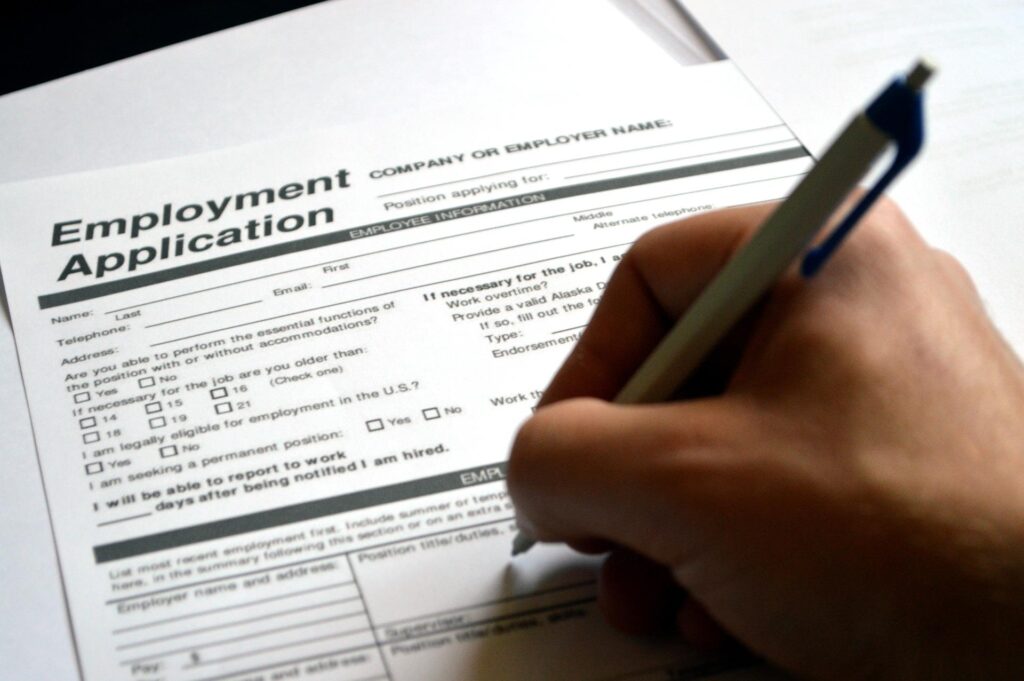Recruitment has certainly changed massively over the last 30 years, since the introduction of the internet. But what about pre-internet? How did people find their employees? How did people find a job?
Gone are the “good old days” that our grandparents speak of. Being able to approach someone, ask for a job, and have a penny in your hand by the end of the day. Didn’t like it? Go somewhere else the next day.
Fast forward to today, and recruitment is looking very different. The most obvious difference being, you don’t even have to do it yourself anymore! That’s what people like US are here for; to PLACE your FACE, matching you with your ideal employer.
From walking into a shop and asking for a job, to submitting a CV to a recruiter and waiting, there have been many ways to find a job. We thought we’d take a look at how finding a job, or finding an employee, has changed over the years…
Pounding the pavements
There was once a day that people would just approach a market stall holder and ask for a job. They would probably start there and then, if there were a job available. They probably wouldn’t have even been asked for their age! Fast forward a few years, even as recent as the 00’s, people would still walk into a shop or restaurant. Armed with a CV asking if there are any jobs. It’s highly unlikely they would start there and then, as more of a “recruitment process” was introduced. Some people may just telephone a company and ask if they had any jobs available. But it was still possible, quite recently, to find yourself a job without the internet.
Newspapers & Noticeboards

If companies had a vacancy, they would often put their ad in the local newspaper. Or an index card on the noticeboard in their local shop, alongside many “For Sale” posts and leaflets. Companies would pay per character for a newspaper ad. The “Jobs” pages would be vast, and in alphabetical order. It wasn’t uncommon to see an ad that merely said “MECHANIC, £5/HOUR, (CONTACT NO.)”. People would spend hours calling all these ads, just to find out some more basic information; location, experience etc. A noticeboard ad was often handwritten by the employer, but could obviously present more information. Still, a person would need to call them to find out any other information and how they go about applying. So whilst it may seem long winded and inconvenient, you could potentially have secured yourself a job and start within a week.
PAPER, PAPER, PAPER
It is thought that the first person to write a professional resume, or CV, was Leonardo Da Vinci, in 1482. Whilst looking for work in Milan, he sent a letter to the Regent of Milan describing his many skills and talents. If a company asked for a CV pre the 90’s, it would have to be taken and handed in personally, or posted! Imagine having to hand-write a CV each time you wanted to apply for a job! If you had any sense, you’d be down at the local library, photocopying several copies! At this time, it was probably a mixed bag of handwritten and computer typed! Similarly, if a company had vacancies, they would more than likely have application forms printed and ready to hand someone. For it then to be completed by hand, usually there and then to avoid having to travel back to hand it back in!

Job Centres
The Job Centre began as the Labour Exchange in 1910. With the idea to match the unemployed with employers who had a labour shortage. Job Centres were on our high streets from the 1970’s and are still present in many cities and towns. A place where the unemployed would go and meet with an advisor; discuss any previous work life experience, qualifications, skills and attributes, and consider what jobs they should apply for. Fast forward to the 90’s and many Job Centre’s would have computers. People could now do the job searching themselves. Whilst anyone could come to look for a job, if they didn’t have the facility at home, it was more typical of the unemployed to go to “sign on”. Winston Churchill was the initiator of the benefits system that allowed “job seekers” to claim an allowance if they could prove they were actively looking for a job.
Introducing the internet
The early 1990’s saw the introduction of the world wide web into many businesses and some households. This meant many people now had home computers to be able to type their CV. Some houses may still not have had a printer, but would save it to a floppy disc or CD-Rom(!) and take it to their local library, and pay to have it printed! For those that did have email, around 1994, a CV could now be attached to an email and sent directly to an employer in response to an ad. Companies now began to build websites, and this included the first online job board sites. From around 1995 websites such as HotJobs and Monster appeared.

The introduction of the internet really was game-changing for the recruitment industry, as well as many others! It meant that now, candidates, recruiters and employers were more connected than ever before. Websites became “one stop shops” for finding a job. Vast amounts of jobs could be posted in one place, for candidates to tick a few filter boxes and search for a job themselves. They could submit their CV for the employer to view whenever they were ready; no more waiting around for Monday! Recruitment agencies were also able to post jobs on behalf of their clients and have their own websites and job databases.
Recruitment today
Candidates can apply for 15+ jobs a day if they wish to. Companies and recruitment agencies have access to thousands of candidates. Recruiters and employers will receive vast numbers of CV’s and applications on a daily basis, and these can be stored for future reference if they’re not quite right just yet!
Matching perfect candidates with employers has become much easier, due to the volume of clients and candidates. Not only can we now match people locally, but we have access to the rest of the world. We can now Place Faces everywhere, with many hybrid and remote working roles being offered. Take a look at whether we’ve got the perfect job for you, or if you need us to find your dream candidate!
